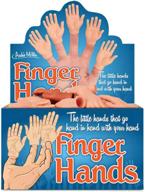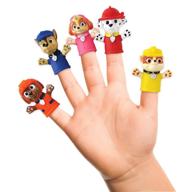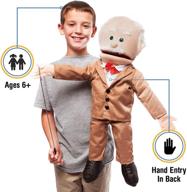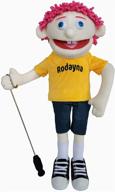How to choose the right ventriloquist puppet for you
Choosing the right ventriloquist puppet is an important decision that will impact your act. Here are some key factors to consider when selecting your puppet:
Similar products
Size
The size of your puppet should fit your hand and performing style. Smaller puppets around 12-14 inches are good for detailed mouth movements and close-up work. Larger 18-30 inch puppets have more stage presence.
Weight
Lighter weight puppets are easier to hold and manipulate for long periods. Heavier wood puppets have more gravitas but can fatigue your arm.
Mouth
- The mouth should open wide enough for clear speech.
- Look for realistic tongue and lip movements.
- A velcro or magnet mouth is easier to manipulate than a hinged mouth.
Head and Facial Features
Consider how the puppet's eyes, eyebrows, nose and head shape impact its personality and expressions.
Another interesting products
Arm Rods
Rigid arm rods allow more control over hand gestures. Flexible rods enable smoother motions.
Top products in 🗣️ Ventriloquist
Clothing
Puppets with removable clothing allow you to modify their outfits and personalities.
By evaluating these key features, you can select a high quality ventriloquist puppet tailored to your skills and routine.
How to make your puppet's mouth movements look realistic
Believable mouth movements are essential for bringing your puppet to life. Here are some tips to make your puppet's speech look natural:
Tongue Movement
The tongue is key for realistic speech:
- Keep the tongue relaxed and flat during open vowel sounds (ah, eh, oh)
- Curl the tongue upwards for closed vowel sounds (oo, ee)
- Touch the tongue behind the top teeth for T, D, N, L sounds
- Quickly flick the tongue for R sounds
Lip Syncing
Sync your puppet's mouth motions to match its words. Exaggerate the lip shapes and widen the mouth opening more than normal speech.
| Mouth Shape | Sounds |
|---|---|
| Wide open | A, E, I, O |
| Narrow, lips pursed | OO, M, B, P |
| Teeth together | S, Z, V, TH |
Head Turns
Turn your puppet's head slightly when it starts or ends speaking to add realism.
Blink Rate
Add natural looking blinks as your puppet talks to bring it to life.
With practice and attention to detail, you can make your puppet's speech truly believable and engaging.
How to transport and store your ventriloquist puppet
Transporting your puppet to shows and storing it properly at home are important to keep it in top condition. Here are some tips:
Transporting Your Puppet
Protect your puppet on the go:
- Pack it in a hard sided case lined with foam to prevent damage.
- Buckle your puppet in a seatbelt if travelling by car.
- Consider buying a plane ticket for it and using a car seat restraint on the flight.
- Never check it as luggage - carry it on the plane instead.
Home Storage
Improper storage can warp your puppet over time:
- Store in a cool, dry location away from heat and moisture.
- Never keep it in a hot attic, shed, or garage.
- Hang it on a sturdy hanger or lie flat - do not let it slump.
- Keep it away from moths and insects that could damage it.
Maintenance
- Gently brush its hair weekly to prevent matting.
- Spot clean stains immediately to avoid setting.
- Consider professional cleaning every few years.
With proper care, a high quality ventriloquist puppet can last for decades and become a treasured part of your act.
How to create funny puppet routines and jokes
Developing amusing ventriloquist routines takes creativity and comedic timing. Here are some tips for writing fun puppet acts:
Build Distinct Characters
Give each puppet a unique voice, persona and quirks. Audiences will find established characters more funny and relatable.
- The wise-cracking sidekick
- The grumpy old man
- The wacky animal
mine Standard Comedy Formulas
Reliable comedic structures like double acts, rule of three and call backs work well for puppet humor.
Leverage Your Puppet's Physical Comedy
Puppets can get away with slapstick humor and exaggerated movements humans can't.
- Have your puppet fall over or get "injured"
- Use crazy facial expressions
- Add physical gags like squirting water
Write Jokes Based on Appearance and Actions
Poke fun at your puppet's looks, voice and behaviors.
- "I'd tell you a joke about my nose but it's too long!"
- "I just flew in from Connecticut and boy are my arms tired!" (flapping puppet arms)
Test material in front of live audiences and improvise. Recording rehearsals can help refine your act.
How To Choose The Right Ventriloquist Puppet For Your Needs?
Choosing the right ventriloquist puppet can be a daunting task, but here are some tips to help you make the right decision:
What Are The Different Types Of Ventriloquist Puppets Available?
There are various types of ventriloquist puppets available, and some of them are:
Ventriloquists have traditionally used carved wooden puppets in their acts. Today, soft puppets are becoming more and more popular with ventriloquists. Whatever the type of puppet, to give the best possible illusion, the expert ventriloquist relies upon a precise synchronization between the movement of the puppet's mouth and each syllable of a spoken word.
What Are The Advantages And Disadvantages Of Using A Marionette As A Ventriloquist Puppet?
Advantages of using a marionette as a ventriloquist puppet:
Disadvantages of using a marionette as a ventriloquist puppet:
In conclusion, while marionettes have some advantages, such as versatility and ease of use, they also have some disadvantages, such as limited size and restricted movements. Therefore, ventriloquists should consider their needs and preferences before choosing a marionette as their puppet.





















